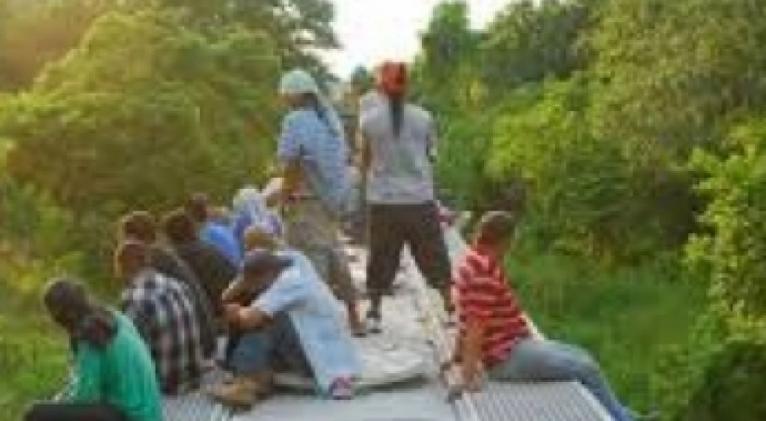Migration in Central America: A Phenomenon with Dangerous Tentacles

Central America, due to its geographical condition, its economic development and the very history of the region is one of the world’s areas where migration is emphasized.
The isthmus is not just a corridor for migrants, mainly south to north, but rather from its countries. It’s considerable the amount of people looking for new opportunities of life.
The causes are plentiful and range from the lack of sustained economic development, socio-political uncertainty, civil wars, insecurity, even the mirages shown by United States of the so-called American Dream.
Nearly 200 thousand Central Americans attempt to cross the Mexican border yearly in their route to the U.S., many of them are children unaccompanied.
Only in the 2009-2014 period, about 77 thousand 243 minors from Central American entered the U.S. unauthorized: 27 thousand 579 came from Guatemala, 25 thousand 985 from Honduras and 23 thousand 679 from El Salvador.
The risky trip is stalked by threads like organized crime, extortions, the U.S. anti-migratory laws, physical lesions, robberies, murders, accidents for falls in trains carrying goods, sexual abuses, and in the end the likely deportation.
November last year, former Guatemala president Otto Pérez Molina; the Honduran leader, Juan Orlando Hernández, and from El Salvador, Salvador Sánchez Cerén, together with the United States vice-president, Joe Biden, presented the Plan of the Alliance for Prosperity of the North Triangle at the headquarters of the Inter-American Development Bank (IDB).
The plan, questioned by many analysts, was created to seek a solution to the so-called crisis of migrant children, and offers to promote the development, economic growth and the security in the region thus preventing illegal emigration.
The initiative is the answer to the meeting of the three Central American leaders with their North American counterpart Barack Obama, three months ago in Washington, after the crisis unleashed by the thousands of minor migrants detained at border detention facilities of the U.S. in 2013 and 2014.
The financing of the plan will include the U. S., the IDB and the World Bank, among other international parts, together with the resources that the governments of the three countries would supply.
Yet for the Guatemalan economist and journalist Luis Solano, the proposal tends to become a new inventing project with a private character that will consolidate the strongest economic groups. This can lead to new waves of migrants, just as it has been happening steadily in the past 40 years.
The recent Cuban migratory movement of about three thousand toward the U.S., stranded in Costa Rica, and that led to a special meeting in El Salvador of the countries the Central American Integration System (CAIS) plus Cuba, Ecuador, Colombia, and Mexico, evidenced another side of the issue.
While for the Central American to immigrate undocumented to the United States, get there and settle legally is much more than an odyssey, for Cubans, because of the North American laws, it’s practically a respect.
At the CAIS meeting plus four all chancellors rejected the Cuban Adjusting Law and other regulatory schemes that encourage illegal emigration of Cubans to the U.S.
In a statement to Prensa Latina, the Foreign Affairs minister of El Salvador, Hugo Martínez, qualified as discriminatory laws with other migrants (Cuban Adjusting Law, the dry-feet, wet-feet politics, and the Program of Parole for Professional Cuban Doctors).
He underlined that the benefits of those regulations do not apply to Central America migrants.
He reiterated that the participant nations in the meeting are willing to contribute to a solution to that hairy situation that undergo three thousand Cuban migrants.
"But there is a structural problem on which we draw the attention of the United States and the other countries of the region, and it’s the fact that we must search for the application of similar standards and that all must have equality", he stressed.
In this context Costa Rica insisted on making Nicaragua responsible of "the crisis" of migrants for not accepting to open a humanitarian corridor in this country.
Managua sustains that agreeing to San José's imposition would legitimate those unilateral measures that encourage "an insecure, unworthy, disordered and illegal migration that affects Cuba and that is already affecting the Central American region".
At the end of the encounter, the Salvadoran chancellor explained that CAIS members will "unilaterally" announce the measures that will find a solution for the problem created in the last days and that shed lights on other sides.
The migratory phenomenon in the region is today more than a derivative matter of the traditional poverty and lack of opportunities. It’s a business with economic and political tentacles that can lead to other dangers like destabilization of countries and even regional, while exacerbating differences.













Add new comment